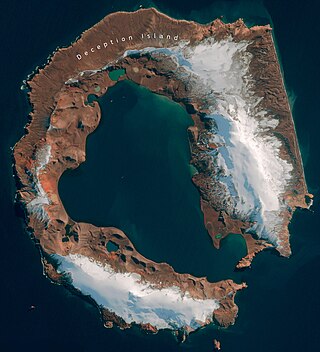
Deception Island is in the South Shetland Islands close to the Antarctic Peninsula with a large and usually "safe" natural harbor, which is occasionally affected by the underlying active volcano. This island is the caldera of an active volcano, which seriously damaged local scientific stations in 1967 and 1969. The island previously held a whaling station. It is now a tourist destination with over 15,000 visitors per year. Two research stations are operated by Argentina and Spain during the summer season. While various countries have asserted sovereignty, it is still administered under the Antarctic Treaty System.

USS Chicago (CL/CA-29) was a Northampton-class cruiser of the United States Navy that served in the Pacific Theater in the early years of World War II. She was the second US Navy ship to be named after the city of Chicago. After surviving a midget submarine attack at Sydney Harbour and serving in battle at the Coral Sea and Savo Island in 1942, she was sunk by Japanese aerial torpedoes in the Battle of Rennell Island, in the Solomon Islands, on 30 January 1943.

USS Kleinsmith (APD-134), ex-DE-718, was a Crosley-class high speed transport for the United States Navy. She was named for Chief Watertender Charles Kleinsmith (1904–1942), who was posthumously awarded the Navy Cross for his heroism during the Battle of Midway.
The line-crossing ceremony is an initiation rite that commemorates a person's first crossing of the Equator. The tradition may have originated with ceremonies when passing headlands, and become a "folly" sanctioned as a boost to morale, or have been created as a test for seasoned sailors to ensure their new shipmates were capable of handling long, rough voyages. Equator-crossing ceremonies, typically featuring King Neptune, are common in the Navy and are also sometimes carried out for passengers' entertainment on civilian ocean liners and cruise ships. They are also performed in the merchant navy and aboard sail training ships.

USS Greer (DD–145) was a Wickes-class destroyer in the United States Navy, the first ship named for Rear Admiral James A. Greer (1833–1904). In what became known as the "Greer incident," she became the first US Navy ship to fire on a German ship, three months before the United States officially entered World War II. The incident led President Franklin D. Roosevelt to issue what became known as his "shoot-on-sight" order. Roosevelt publicly confirmed the "shoot on sight" order on 11 September 1941, effectively declaring naval war against Germany and Italy in the Battle of the Atlantic.

HMS Neptune was a 98-gun second-rate ship of the line of the Royal Navy. She served on a number of stations during the French Revolutionary and Napoleonic Wars and was present at the Battle of Trafalgar in 1805.

Antarctic Press is a San Antonio-based comic book publishing company which publishes "Amerimanga" style comic books. The company also produces "how-to" and "you can" comics, instructing on areas of comic book creation and craft.
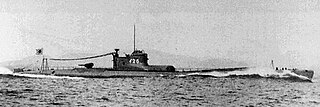
I-26 was an Imperial Japanese Navy B1 type submarine commissioned in 1941. She saw service in the Pacific War theatre of World War II, patrolling off the West Coast of Canada and the United States, the east coast of Australia, and Fiji and in the Indian Ocean and taking part in Operation K, preparatory operations for the Aleutian Islands campaign, and the Guadalcanal campaign, the Marianas campaign, and the Battle of Leyte Gulf. She was the first Japanese submarine to sink an American merchant ship in the war, sank the first ship lost off the coast of State of Washington during the war, damaged the aircraft carrier USS Saratoga (CV-3), sank the light cruiser USS Juneau (CLAA-52), and was the third-highest-scoring Japanese submarine of World War II in terms of shipping tonnage sunk. Her bombardment of Vancouver Island in 1942 was the first foreign attack on Canadian soil since 1870. In 1944, I-26′s crew committed war crimes in attacking the survivors of a ship she sank. She was sunk in November 1944 during her ninth war patrol.

HMS Endurance was a Royal Navy ice patrol vessel that served from 1967 to 1991. She came to public notice when she was involved in the Falklands War of 1982. The final surrender of the war, in the South Sandwich Islands, took place aboard Endurance.

The Battle of the Caribbean refers to a naval campaign waged during World War II that was part of the Battle of the Atlantic, from 1941 to 1945. German U-boats and Italian submarines attempted to disrupt the Allied supply of oil and other material. They sank shipping in the Caribbean Sea and the Gulf of Mexico and attacked coastal targets in the Antilles. Improved Allied anti-submarine warfare eventually drove the Axis submarines out of the Caribbean region.

USS Howard W. Gilmore (AS-16) was a Fulton-class submarine tender in service with the United States Navy from 1944 to 1980. She was scrapped in 2006.

USS Douglas A. Munro (DE-422) was a John C. Butler-class destroyer escort acquired by the U.S. Navy during World War II. The primary purpose of the destroyer escort was to escort and protect ships in convoy, in addition to other tasks as assigned, such as patrol or radar picket.
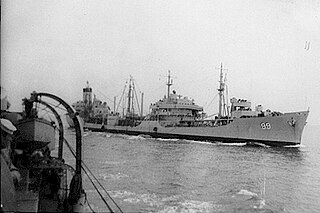
USS Canisteo (AO-99) was a Cimarron-class fleet oiler constructed for the United States Navy in the closing days of World War II. Commissioned too late for service in that conflict, she had a lengthy career in the Cold War that followed. She was the only U.S. Navy ship to bear the name Canisteo, after the Canisteo River in New York.

Isaac "Ike" Schlossbach was an American polar explorer, submariner and aviation pioneer.
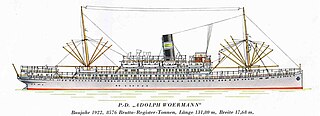
SS Adolph Woermann was a German steam ocean liner built in 1922 by Blohm & Voss in Hamburg for the shipping lines Woermann-Linie (WL) and German East Africa Line and named after German merchant, ship owner and politician Adolph Woermann, and the fourth ship of the same name.

George John Dufek was an American naval officer, naval aviator, and polar expert. He served in World War II and the Korean War and in the 1940s and 1950s spent much of his career in the Antarctic, first with Admiral Byrd and later as supervisor of U.S. programs in the South Polar regions. Rear Admiral Dufek was the director of the Mariners' Museum in Newport News, Virginia after his retirement from the Navy in 1959.
Admiral Sir Thomas Williams GCB was a senior British Royal Navy officer of the late eighteenth and early nineteenth centuries, who served in numerous theatres during the American Revolutionary War, French Revolutionary Wars and Napoleonic Wars. As a young officer he fought at a number of battles in the Caribbean and as a frigate captain he was knighted for his actions at the action of 8 June 1796 in which two French frigates were captured without a single man killed or wounded on Williams' ship HMS Unicorn. Later in his career, Williams commanded squadrons blockading the European coast and assisting the supply of the British Army during the Peninsula War.

Sappho was one of two defender yachts at the second America's Cup challenge, stepping in when defender Columbia was damaged in the third race.
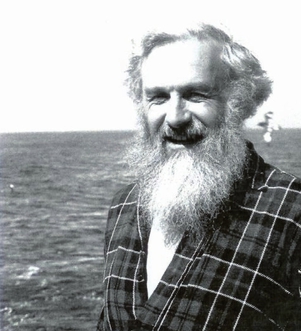
William Nigel Bonner was a British zoologist, Antarctic marine mammal specialist, author and ecologist. The topics of his books and scientific publications included marine animals, reindeer and the ecology of the Antarctic. He headed the Life Sciences Division of the British Antarctic Survey from 1974 to 1986, and served as deputy director from 1986 to 1988. Bonner received the Polar Medal in 1987, in recognition of his work in Antarctica.















